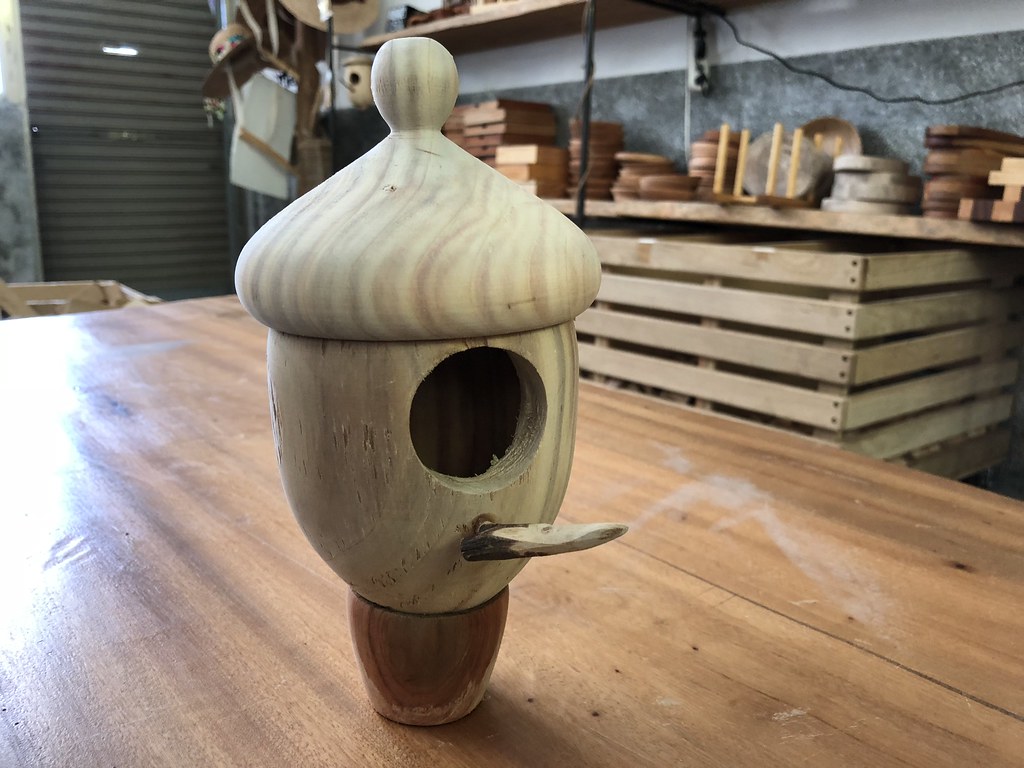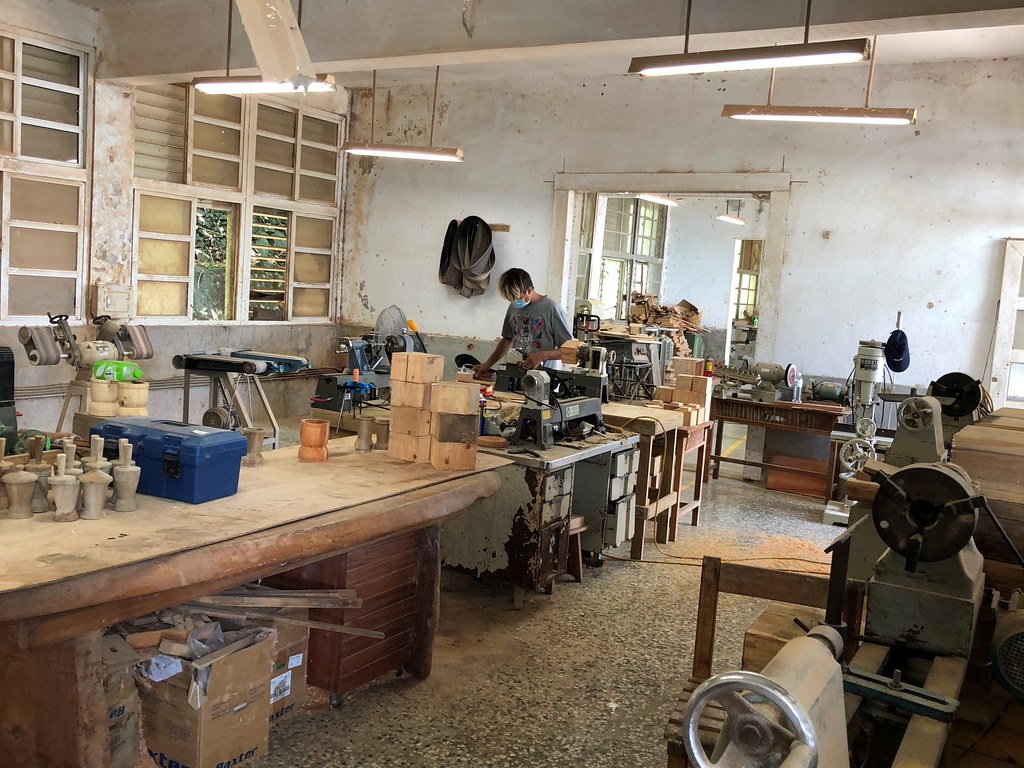Kelly Parisi was only 21 years old when her heart stopped. Her mother, Barbara, walked into her bedroom around 9 p.m. on a Saturday evening in September 2012, nail polish and cuticle sticks in hand, ready for pedicure night. Instead, she found Kelly slumped, breathless and unconscious, in Supta Virasana (Fallen Hero Pose).
Finding no pulse in her daughter, Barbara, a nurse, grabbed her phone, dialed 911, and started CPR. “I didn’t realize how frail Kelly was until I flipped up her shirt,” she says. “I went to count her ribs to start compressions, and I didn’t have to feel for them—I could see them. Her chest was like a 10-year-old’s.”
A straight-A college student, Kelly had moved back to her parent’s home in a suburb of Boston about eight months before, after experiencing a sexual assault on campus. She was grappling with anxiety, depression, and post-traumatic stress, and yoga had become her “safe place,” says Barbara. It was a practice that helped her relax, a community that made her feel secure, and an exercise that helped her feel strong and in control of her body again.
See also Yoga for Eating Disorders
But Kelly had also become “compulsive” about yoga, Barbara recalls, spending hours at The Yoga Loft in nearby Wilmington where she’d started a yoga teacher training, and declining food because she didn’t want to upset her stomach during practice. In addition to her twice-daily yoga practice (typically at vigorous and hot classes), she was regularly running on the treadmill, restricting her diet, and doing occasional juice cleanses. She had lost weight since returning home and hadn’t had her period in months, something she’d experienced as a competitive figure skater in her teens. “That wasn’t out of the norm for her; I didn’t think it was as serious as it was,” says Barbara.
The ambulance arrived at the Parisis’ house at about 9:30 p.m. Shortly after, Kelly was pronounced dead. The official cause of death: accidental amphetamine intoxication. Kelly had been taking prescription stimulants for her ADHD for years, but there were no signs she’d taken more than the prescribed dose. However, her body mass index bordered on underweight, and Barbara recalls the EMT saying that her daughter’s blood sugar was extremely low. Both are known indicators of prolonged undernourishment and anorexia, says Urszula Kelley, MD, an eating-disorder specialist at Children’s Medical Center of Dallas. And other behaviors and side effects associated with eating disorders—undernourishment, sweating, vomiting, laxative use and resulting dehydration—can lead to dangerous irregular heart rhythms and electrolyte imbalances that, when exacerbated by stimulants or aerobic exercise, can result in sudden cardiac death. In fact, cardiac complications are one of the most common causes of death among anorexia and bulimia patients.
“My heart aches every second of every hour of every day,” says Barbara, whose memory of her daughter and the pain of losing her is as vivid today as it was that night two years ago. “I see her friends graduating and getting jobs, getting engaged, and I wonder what she would be doing now. But, I do not regret one millisecond I had her in my life, as I am a better person for the time she was in my life.”
See also 6 Women Tackle Body Image in the Practice of Leadership Series
Unhealthy Fuel for Disordered Eating
As a healing practice, yoga has helped countless people recover from physical and emotional ailments as varied as migraines, sciatica, and PTSD. But for people with disordered eating habits, or those with poor body image—which includes some 80 percent of American women, according to research—counting on yoga’s promise of emotional and spiritual healing can be perilous: Drawn to yoga as a means of self-care, they instead may find reinforcement for dangerous weight-control behaviors in a studio culture that increasingly celebrates thinness, flexibility, and perfection of form.
And while a practice that encourages a mind-body connection and self-awareness might seem like the last place to find fuel for disordered eating, a study in the International Journal of Eating Disorders found yoga students to be at equal or greater risk than the general population. “We can’t say whether yoga hurts or helps, but I think that some people who are dealing with disordered eating and body dissatisfaction are attracted to yoga because they’re looking for an answer,” says study author Dianne Neumark-Sztainer, PhD, who researches body image and eating disorders at the University of Minnesota School of Public Health.
Anecdotally, yoga teachers are reporting seeing more cause for concern, including noting students who are underweight taking multiple classes a day, fainting in class, or practicing while on a low-calorie juice cleanse. “Many yoga practitioners struggle with disordered eating and negative body image,” says Bo Forbes, a yoga teacher and clinical psychologist who specializes in the therapeutic application of yoga for psychological disorders. “It’s not enough to be thin; female yogis often feel the pressure to be thin, strong, and flexible. They’re critiquing their bodies with unattainable ideals.”
See also A Practice to Help You Break Up with Your Bad Body Image Once and for All
From a clinical perspective, some eating-disorder treatment experts worry that patients turn to yoga to burn calories, suppress hunger, or numb emotional pain, but under the guise of a devoted practice and clean eating, their illness goes unnoticed. That was true for Kelly Parisi. She was a star student at The Yoga Loft, and her teacher trainers and fellow students never suspected she was struggling. “She looked healthy. Just really in shape,” says Jen Ryan, the studio owner and leader of Kelly’s yoga teacher training. Instead, her hours of practice and volunteering at the studio were seen as a sign of dedication and vibrancy. She was nicknamed “the rubber band” for her flexibility.
“As a community, it’s important we start looking for the signs of eating disorders—students who are excessively thin, compulsive about their practice, obsessing about achieving the pose and doing more, more, more—they are missing the fact that yoga is really about being kind and taking care of yourself,” says Maty Ezraty, founder of YogaWorks, a teacher and teacher trainer for 35 years. “Today, a lot of people use yoga as an exercise program. The public puts pressure on yoga teachers to give them a workout. And teachers, especially young ones, buckle to the pressure because they want to attract more students.”
Yet the same practice that can exacerbate body-image issues and eating disorders may also help heal and prevent them. Research is finding positive effects from yoga in treatment, including a recent study at Seattle Children’s Hospital, which showed that therapeutically-informed yoga significantly reduced eating-disorder symptoms, anxiety, and depression among adolescents. Clinicians are taking note—over half of inpatient treatment centers in the United States incorporate yoga as an adjunct therapy, the Journal of Eating Disorders reports. “Individuals with eating disorders often work so hard to disconnect from their bodies,” says Robyn Caruso, executive director at A New Journey Eating Disorder Treatment Center in Santa Monica, California. “Yoga helps many of our clients reconnect to their body in a nurturing way.”
If yoga can both help and hurt vulnerable students, the question remains: What aspects are positive and which are harmful, and how can the yoga community protect students from the risks?
See also Why Negative Body Speak Is Ruining Your Life (+ 3 Ways to Stop It Now)
The Self-Destructive Side of Dedication
A few days after Kelly’s death, one of her college classmates visited Barbara and told her that Kelly had once confessed to struggling with an eating disorder. The following night, Barbara went into her daughter’s room to search for clues, and discovered notebooks filled with calorie counts and exercise logs tracking Kelly’s yoga practices to the minute. There were categories for “vigorous” practices and “easy” practices, and some days Kelly did more than three hours of yoga in total, all while subsisting on little more than snacks, sugar-free Red Bull, kombucha, laxatives, and the occasional chai latte.
Kelly’s obsessive relationship with yoga isn’t atypical for people with eating disorders, says Caruso, who uses caution when suggesting yoga to patients. Asana practice can play into compulsive or excessive exercise, a hallmark symptom among anorexia and bulimia sufferers who want to burn unwanted calories, ease the guilt of consuming “too much” food, or numb their emotions. Forbes calls the yoga version of this “yogarexia,” which she defines as practicing in excess to avoid uncomfortable feelings, including going to multiple yoga classes per day (often heated or fast paced), avoiding social engagements, and becoming rigid about the length and intensity of one’s daily practice. Feeding into this is the common notion—often taught in classes—of yoga as a path to self-betterment, which can drive vulnerable students to feel they are never good enough. “I’m seeing more and more people use the physical practice to shape and perfect their bodies rather than develop more self-compassion,” Forbes says.
Lauren Medeiros, 31, fell into this self-critical mindset during her struggles with anorexia. After developing the illness in college and trying to get well at two different inpatient treatment centers without success, she turned to yoga, hoping the gentle practice she’d first discovered back in high school would help. Instead, it drove her deeper into the illness.
See also What Yoga Taught Me about Healthy Eating
“As I got ‘better’ at yoga and began to identify myself as a yogi, I became harder on myself and my performance,” she says. The image of an ideal yogini as thin, toned, and spiritual—represented in media images and often personified in her classmates—became a yardstick she used to criticize and berate herself. She no longer experienced the practice as a way to feel comfortable in her body, as she had as a teen. “My focus became less of an inward journey and more focused on fitting in,” she says.
What’s more, fellow students often unintentionally reinforced her distorted body image. “I remember at one of my lowest weights, they’d be like, ‘I bet if I was as skinny as you, I could get into that pose!’”
Some of the philosophical teachings Lauren heard in class, including Patanjali’s moral precepts of brahmacharya (control of the senses) and saucha (bodily cleanliness), also fueled her feelings of inadequacy. “I felt I wasn’t pure or spiritual enough,” she says. “Sometimes I used the philosophies as justification for criticizing and starving myself. I felt I wasn’t supposed to have desire or want pleasure.”
The principle of saucha, when taught out of context or oversimplified, can sound like another reason to see your body as dirty or imperfect, says Forbes, reinforcing the negative self-belief that underlies eating disorders. And such teaching may motivate some individuals to go on one of the radical, low-calorie cleanses popular in the yoga community. (A Google search turns up dozens of cleanse and detox programs and juice products marketed with the term “saucha.”)
But despite their reputation, prolonged juice fasts are ineffective: Weight loss is likely temporary, and according to Michael Strober, PhD, director of the University of California Los Angeles Eating Disorder Treatment Center, your body doesn’t need any help with detoxification—our physiological systems naturally shed toxins and waste products. “Juice fasts for ‘detox’ lack any sensible rationale,” he says. Worse, reduced-calorie dieting can also trigger full-blown eating disorders in vulnerable people, says Neumark-Sztainer. And it can be downright dangerous, possibly leading to cardiac irregularities, hypoglycemia, nutrient deficiencies, and even death.
See also 14 Ways to Practice Mindful Eating
The Path to Healing
After almost 12 years of struggling with her illness, Lauren weighed just 68 pounds. She knew she needed help. Seeking emotional healing and spiritual growth, she tried a yoga retreat at the Omega Institute in Rhinebeck, New York, in 2013. But even in the retreat’s nurturing environment, her illness persisted and she couldn’t get back to a healthy weight. After her parents pleaded with her to go back into treatment, she checked into another inpatient eating disorder clinic in April, but felt disheartened at the sudden loss of control and privacy (she couldn’t even go to the bathroom without supervision). She also missed her yoga practice, which her treatment team didn’t allow to prevent her from exertion and burning calories. The hardest part, however, was the extreme discomfort of her prescribed re-feeding program. Though often medically necessary to help get patients back to a life-sustaining weight, this type of protocol can require patients to eat between 3,000 and 8,000 calories each day over the course of five or six meals. In some cases, patients have to finish eating within a limited time, or they’ll be force-fed with a naso-gastral feeding tube. For Lauren, refeeding was a physically and emotionally traumatic process that further disconnected her from her body. “I spent years training myself to ignore hunger with my eating disorder,” says Lauren. “Treatment trained me to ignore my fullness signals as well.”
Three weeks into her treatment and still hovering below 80 pounds, she abandoned the program, returning home to Austin, Texas, to try to recover on her own. She’s now seeing a therapist and nutritionist and has stopped attending public yoga classes, instead practicing gentle yoga at her own pace at home.
See also 10 Ways to Love Yourself (More) in the Modern World
But her recovery remains an uphill battle. Traditional eating-disorder treatment programs have a low success rate—dropout rates at inpatient programs for anorexia are as high as 46 percent, according to a 2008 study, and among patients who do stick it out, about half relapse. Some experts and clinicians think the missing key to long-term recovery may be rebuilding body awareness. A growing area of research suggests these patients may experience a deficit of what neuroscientists call interoceptive awareness: the ability to sense internal bodily states including hunger and fullness cues, emotions, pain, thirst, and heart rate, according to Neumark-Sztainer. Yoga, taught therapeutically, may be well suited to help patients revive interoceptive awareness, she says.
Research is still in its infancy, but it’s promising. For instance, one University of California, Berkeley study showed that yoga practitioners had greater body awareness and responsiveness to body sensations than nonpractitioners. And because yoga has documented success in helping with other mental-health conditions that are often comorbid with eating disorders, such as PTSD, anxiety, and depression, some clinicians are trying it with patients, with good results.
Nora Groeschel, 31, was introduced to yoga by her treatment team and credits it with helping her fully recover from the anorexia she battled for nearly 10 years. A pharmacist from Madison, Wisconsin, Nora first struggled with disordered eating in college. By her third year in pharmacy school, she says, she felt trapped in an addictive cycle of starving, purging, and compulsive exercise and had isolated herself from friends. The pattern continued when she got married—she’d spend at least two hours a day at the gym and limited her food intake—and at age 28, her weight hit a new low. One evening, Nora’s husband sat her down and read off a list of names. “Do you know what all these people have in common?” he asked her. “They are all concerned about your weight, and your life.”
See also 5 Ways to Infuse Your Self-Talk with Self-Love
Inspired and determined to recover, Nora began seeing a therapist and nutritionist. But improvement was slow; she continued to hate her body, felt numb to her emotions, and couldn’t let go of her five-day-a-week vigorous exercise routine. When her treatment team suggested yoga, she was reluctant to replace a gym workout with a gentler activity. But once she tried it, she says it became “the single-most helpful modality” in her recovery, encouraging a more compassionate relationship with her body. She credits the introspective elements of yoga—meditations focused on tuning in to sensation, teachings on self-love, moving and breathing in unison in a group—with helping her rediscover a feeling of being at home in her body. “I was amazed at the comfort my classmates had in their bodies, especially the women with soft, supple bodies or curves greater than my own,” she says. “They had some of the most graceful practices I’d ever seen.”
Melody Moore, PhD, a Dallas-based clinical psychologist who uses yoga in her work with eating-disorder patients, says yoga taught with breath awareness and mindfulness can help patients learn how to regulate and calm difficult emotions rather than repress them through compulsive behaviors, and also to rediscover a sense of joy in their body and self-acceptance.
“In yoga, the connection to breath can nurture a connection to one’s real feelings and needs,” says Moore. “The practice allows someone who has been either restricting or overeating an opportunity to tune in to their body and respond with compassion and kindness.” She considers yoga such a valuable tool for her patients that she co-founded the Embody Love Center, a treatment center incorporating yoga and holistic nutrition, and the Embody Love Movement, an outreach program in schools and college campuses that includes yoga to help people gain body awareness and prevent eating disorders.
See also How One Yoga Teacher Reclaimed Her Healthy Body Image in the Face of Shaming
Creating Safe Spaces
As yoga continues to grow more popular by the day, so do both the risks for students who struggle with body image and food issues and the opportunity for prevention. Teachers have a growing sense of urgency to determine how to keep vulnerable students safe, and to make their studios havens for positive attitudes and behavior.
Looking back on yoga’s role in her recovery, Nora says dosage was key to using the practice healthily. “Had I found yoga at the height of my disorder, I would have gone to the hottest studios, the hardest practices,” she says. Instead, her treatment team had her begin with only one class a week, a moderate approach clinicians say is key for students with these illnesses. If a student is at a dangerously low weight, or engaging in purging behaviors, Moore suggests they refrain from asana altogether.
Tara Stiles, founder of the popular Strala Yoga based in New York City, herself suffered from an eating disorder in her late teens and says her personal experience makes her feel responsible for helping protect students. When she suspects a student is struggling, she reaches out and sets firm boundaries when necessary. “I don’t want someone who weighs 80 pounds being in a yoga class,” she says. “They’re welcome to hang around the studio, maybe go to the gentle classes. But I can’t keep them safe when we’re doing pushups or Handstands. If they fall, they’re going to break bones.” Stiles also emphasizes it’s important that students know they’re cared for, and that her studio is a welcoming space. “I invite them out to lunch, and if they say they’ve already eaten I say, ‘Well, how ‘bout dinner?’ If you care about them, you can’t pretend nothing is wrong.”
See also 6 Excerpts on Yoga and Body Image
But because it’s often hard to recognize a student who may be struggling with an eating disorder or at risk for one, it’s critical that teachers think in terms of prevention, says Forbes, and choose language that promotes self-acceptance, not self-criticism. “Yoga teachers know they’re supposed to send this message of ‘love your body,’ but may actually mistakenly send a message of ‘your body needs to be fixed,’” she says. “Instead of emphasizing the shape or form of a pose or practice, we should emphasize the quality of awareness in the pose and the ability to feel into and awaken parts of our bodies and awareness that are not awake.”
Neumark-Sztainer agrees: “If I hear a teacher talk about six-packs or detoxes, I won’t go back to that class. Being cognizant about the language they’re using is something every teacher can do.”
A key factor that can make yoga supportive for those who struggle is finding the right community. Nora says the most important component of her healing came when she joined a yoga-based support group in Madison facilitated by yoga teachers Amanda Ginther and Sarah Higgins, both of whom have healed from disordered eating. (Their program is part of Eat Breathe Thrive, a nonprofit run by this writer.) There, she bonded with other students who were working with a range of body-image and eating disorders. “I’ve never felt so supported, un-alone, and empowered,” she says. “The connection and safety I felt with the group was amazing—I was vulnerable, but supported.”
Now at a healthy weight, Nora wants to give others the gift that changed her life, and is doing a 200-hour yoga teacher training. “For 10 years I tried to recover by myself,” she says. “The practice of yoga pretty much saved my life. I feel alive, I feel connected to others, I feel in union with my body and breath. I want others to have that—I have to share it.”
See also Unf’withable: A Two-Hour Yoga Playlist to Empower Yourself
Chelsea Roff is the founder of Eat Breathe Thrive, a nonprofit supported by the Give Back Yoga Foundationthat helps people fully recover from disordered eating and negative body image through yoga and community support programs. After recovering from anorexia in her late teens, Roff has worked as an author, speaker, and advocate to offer yoga in the treatment of mental-health issues. Learn more about her work at eatbreathethrive.org.
To donate to the Kelly Parisi Memorial Fund, which supports eating-disorder education and awareness in the yoga community, visit kellyparisimemorialfund.com.





























































































































【容大千量】